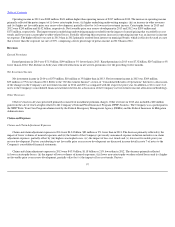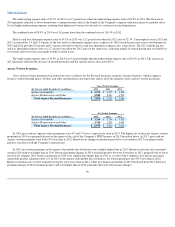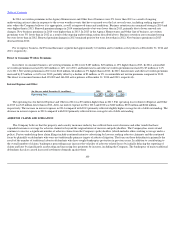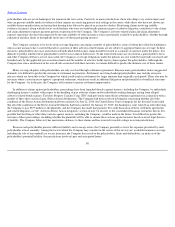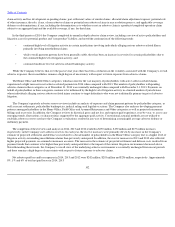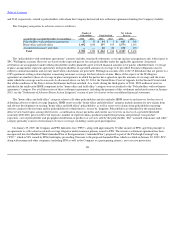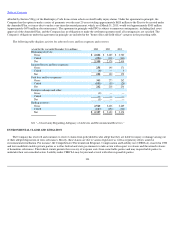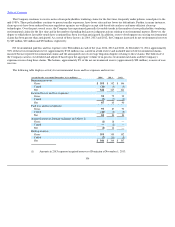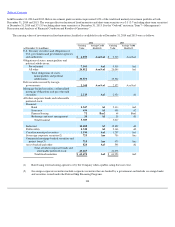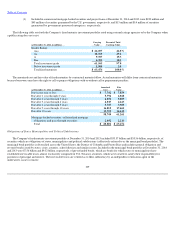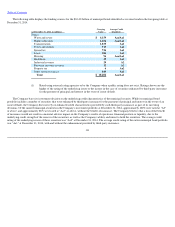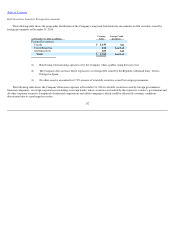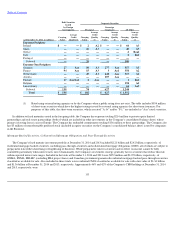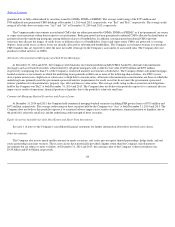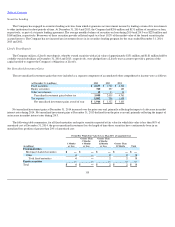Travelers 2014 Annual Report Download - page 106
Download and view the complete annual report
Please find page 106 of the 2014 Travelers annual report below. You can navigate through the pages in the report by either clicking on the pages listed below, or by using the keyword search tool below to find specific information within the annual report.
Table of Contents
The Company has been, and continues to be, involved in litigation involving insurance coverage issues pertaining to environmental claims.
The Company believes that some court decisions have interpreted the insurance coverage to be broader than the original intent of the insurers and
policyholders. These decisions often pertain to insurance policies that were issued by the Company prior to the mid
-
1980s. These decisions
continue to be inconsistent and vary from jurisdiction to jurisdiction. Environmental claims, when submitted, rarely indicate the monetary amount
being sought by the claimant from the policyholder, and the Company does not keep track of the monetary amount being sought in those few
claims which indicate a monetary amount.
The resolution of environmental exposures by the Company generally occurs through settlements with policyholders as opposed to claimants.
Generally, the Company strives to extinguish any obligations it may have under any policy issued to the policyholder for past, present and future
environmental liabilities and extinguish any pending coverage litigation dispute with the policyholder. This form of settlement is commonly referred
to as a "buy
-
back" of policies for future environmental liability. In addition, many of the agreements have also extinguished any insurance
obligation which the Company may have for other claims, including but not limited to asbestos and other cumulative injury claims. The Company
and its policyholders may also agree to settlements which extinguish any liability arising from known specified sites or claims. Where appropriate,
these agreements also include indemnities and hold harmless provisions to protect the Company. The Company's general purpose in executing
these agreements is to reduce the Company's potential environmental exposure and eliminate the risks presented by coverage litigation with the
policyholder and related costs.
In establishing environmental reserves, the Company evaluates the exposure presented by each policyholder and the anticipated cost of
resolution, if any. In the course of this analysis, the Company generally considers the probable liability, available coverage and relevant judicial
interpretations. In addition, the Company considers the many variables presented, such as: the nature of the alleged activities of the policyholder at
each site; the number of sites; the total number of potentially responsible parties at each site; the nature of the alleged environmental harm and the
corresponding remedy at each site; the nature of government enforcement activities at each site; the ownership and general use of each site; the
overall nature of the insurance relationship between the Company and the policyholder, including the role of any umbrella or excess insurance the
Company has issued to the policyholder; the involvement of other insurers; the potential for other available coverage, including the number of
years of coverage; the role, if any, of non
-
environmental claims or potential non
-
environmental claims in any resolution process; and the applicable
law in each jurisdiction. The evaluation of the exposure presented by a policyholder can change as information concerning that policyholder and
the many variables presented is developed. Conventional actuarial techniques are not used to estimate these reserves.
In its review of environmental reserves, the Company considers: past settlement payments; changing judicial and legislative trends; its
reserves for the costs of litigating environmental coverage matters; the potential for policyholders with smaller exposures to be named in new
clean
-
up actions for both on
-
and off
-
site waste disposal activities; the potential for adverse development; the potential for additional new claims
beyond previous expectations; and the potential higher costs for new settlements.
The duration of the Company's investigation and review of these claims and the extent of time necessary to determine an appropriate estimate,
if any, of the value of the claim to the Company vary significantly and are dependent upon a number of factors. These factors include, but are not
limited to, the cooperation of the policyholder in providing claim information, the pace of underlying litigation or claim processes, the pace of
coverage litigation between the policyholder and the Company and the willingness of the policyholder and the Company to negotiate, if
appropriate, a resolution of any dispute pertaining to these claims. Because these factors vary from claim
-
to
-
claim and policyholder
-
by
-
policyholder, the Company cannot provide a meaningful average of the duration of an environmental claim. However, based upon the Company's
experience in resolving these claims, the duration may vary from months to several years.
105




